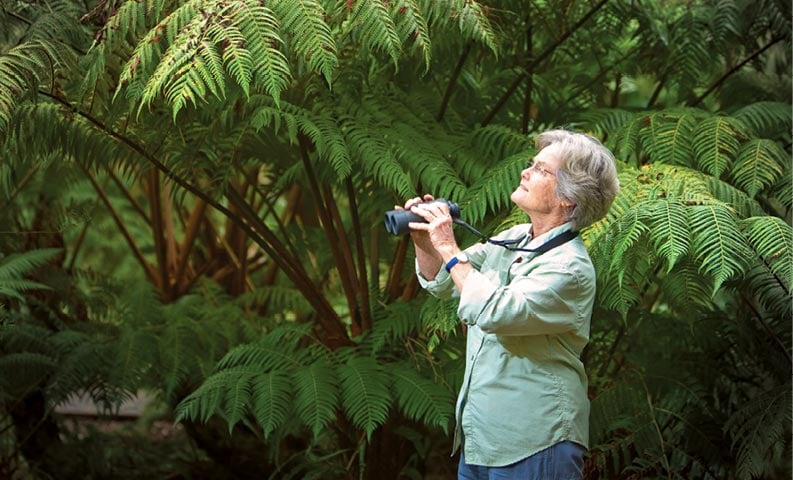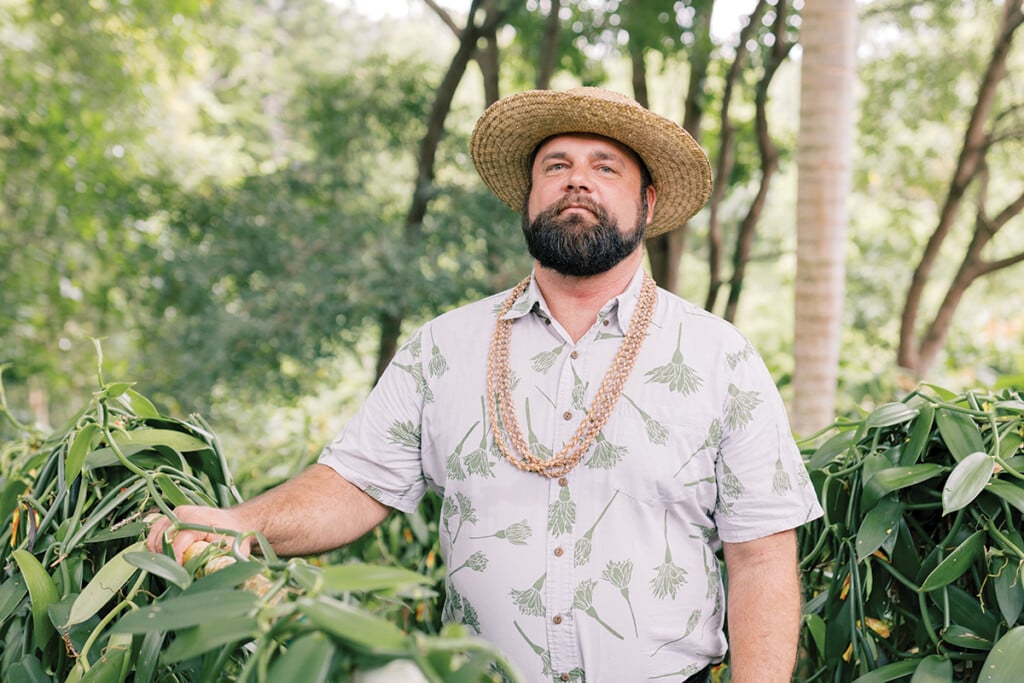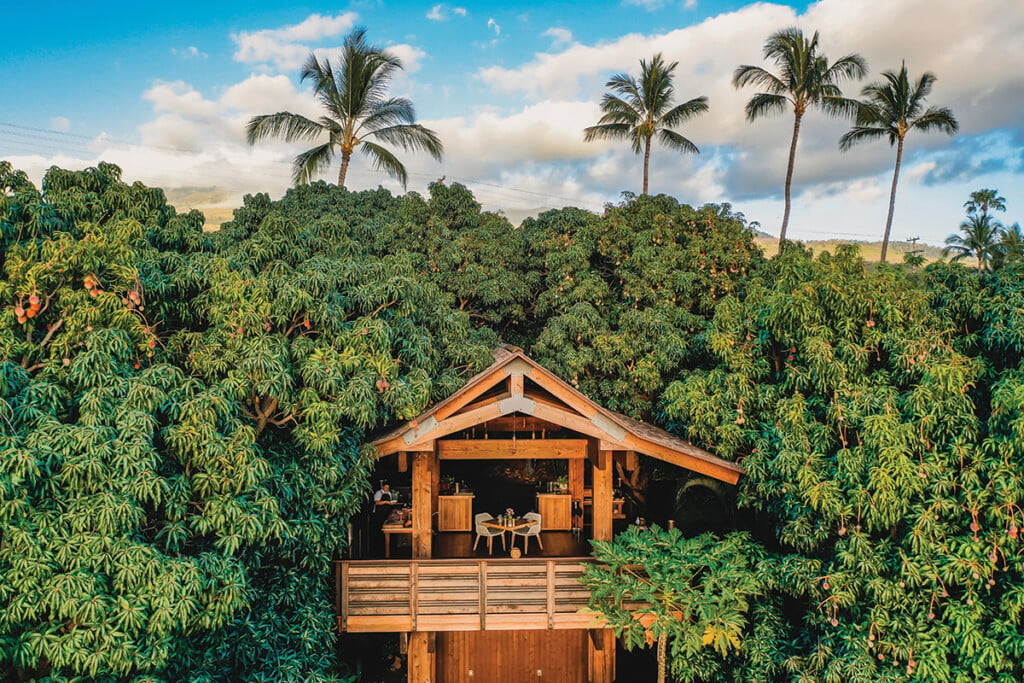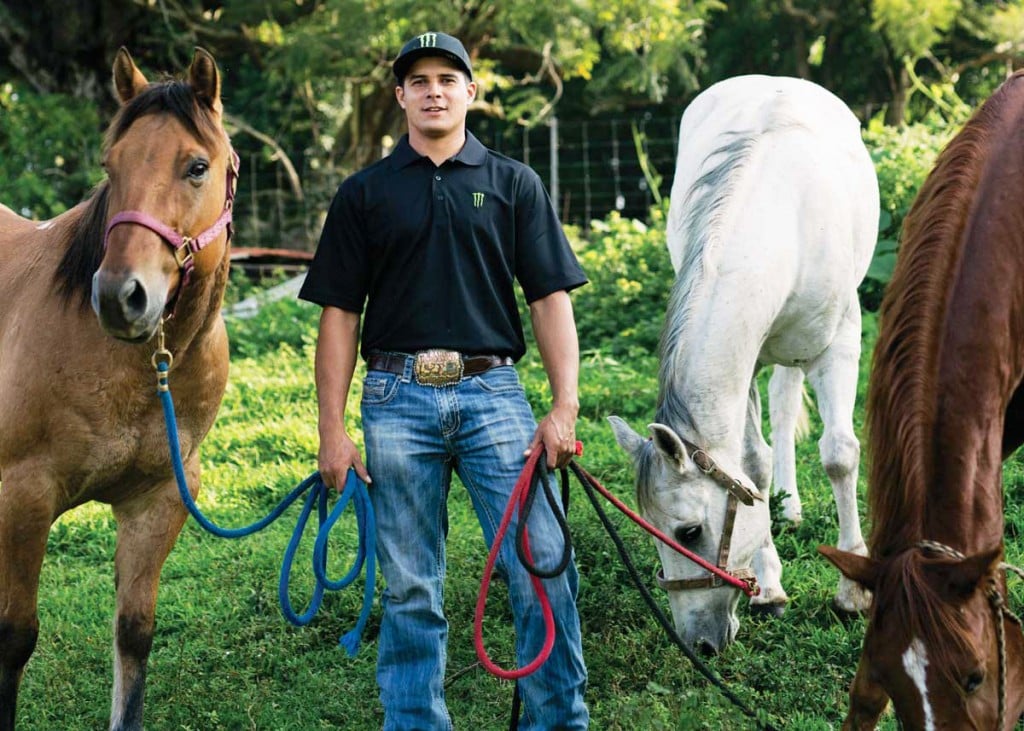Sheila Conant: 5 Things I Love About Hawaii’s Native Birds
Over the past four decades, Conant, a biology professor, has collected recordings, photos and her own vivid memories of native Hawaiian birds.

Editor’s note: Dr. Sheila Conant has received awards from the Hawaii Audubon Society and the Hawaii Conservation Alliance for Lifetime Achievement, as well as being named the U.S. Fish and Wildlife Service’s Recovery Champion Award in 2012. In 2014, she received the Ralph W. Schreiber award, a national honor which recognizes extraordinary scientific contributions to the conservation, restoration, and preservation of birds and their habitats. She is now a professor emeritus, serving as a committee member in the University of Hawaii’s Zoology and Biology departments.
—
The Kauai ooaa is a black bird, with a white patch at the bend of its wing. Its song is a haunting flutelike melody punctuated with trills, warbles and even whistles.
“Listen,” says Sheila Conant, an expert on Hawaii birds. She cues a tape recording of a pair of throaty ooaa, made decades ago during an expedition that took her into the Alakai Swamp—an alpine bog area on Kauai’s Mount Waialeale, one of the wettest places on Earth.
“You know, the only place in the last hundred years that anybody could hear this song was in the middle of the Alakai Swamp,” she says. “These were the last two birds.” Conant falls silent for several seconds, listening to the recording.
“Beautiful birds,” she adds, wistfully.
In the late 1800s, endemic birds like the ooaa—native only to Kauai—thrived in Island forests. The introduction of non-native predators, such as mongoose, rats and domestic cats, however, hastened the extinction of dozens of species. Population increases, development and agriculture, and introduced diseases like avian malaria and avian pox, also contributed to their demise.
Born and raised in Oahu’s leafy Manoa Valley, Conant spent many weekend mornings as a child hiking with her brothers in the rainforests tucked high in the valley’s watershed. Over the past four decades, she has collected recordings, photographs and her own vivid memories of many native Hawaiian bird species, including seven she has seen in the wild that are now extinct.
As part of her student curriculum and research work at the University of Hawaii at Manoa—where she completed her undergraduate studies—Conant focuses on increasing the population of the Islands’ more than 30 endangered native birds.
“Those are the birds I love most,” says Conant.
1. BEAUTY
“To see the iiwi (a scarlet Hawaiian honeycreeper) flitting around, drinking nectar from red ohia flowers with its long, curved bill, is just beautiful to me.”
2. EXPLOITS
“Some of our native birds can do what I think are unimaginable things. When an uau, (Hawaiian petrel) egg hatches, one parent stays with the chick while the other travels a loop that goes all the way around the northern Pacific Ocean—about 12,000 kilometers (7,450 miles) in 21 days—to grocery-shop for the chick.”
3. EVOLUTION
“All native Hawaiian honeycreepers share a common ancestor—probably a flock of rosy finches from Asia—that landed here about 5 million years ago. Spectacular things have happened (to Hawaii birds) as a result of evolution—you can see it in the wide range of variations in colors, bills, feeding habits and songs of more than 55 species of our honeycreepers.”
4. PROTECTED
“There are still many Hawaiian birds we know very little about, such as the millerbird, native to the Northwestern Hawaiian Islands’ Papahanaumokuakea Marine National Monument. Last fall, there was a population of fewer than 300 birds left on the island of Nihoa. In an effort to protect the species from wipeout due to natural disaster or disease, wildlife biologists moved two dozen to Laysan island several hundred miles to the northwest. I’m so happy that happened.”
5. PEACE
“Nihoa is the largest and tallest of Papahanaumokuakea’s islands, which stretch from northwest of Kauai to Kure Atoll. From its peak elevation, you can see the air above and the ground below filled with birds. At night there, perched on a ledge in front of my tent, I have watched the graceful frigatebird fly across expansive full moons. It’s peaceful to be where the native birds are. There’s a sense of being in a place where things are as ‘right’ as they can be.”


